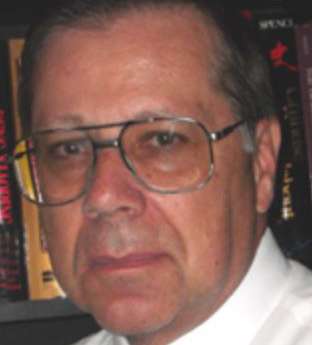Nuclear fusion — a fuller picture
John Richard Schrock“/>John Richard Schrock
By JOHN RICHARD SCHROCK
“Today we burn the rocks. Tomorrow we burn the oceans!” This was an unforgettable statement from one of the 16 mm films I showed to my students when I taught in 1971. My school district was poor. There was no money for audio visuals. But I could borrow free films from the Oak Ridge Nuclear Lab in Tennessee. We also offered 9-week phase elective courses so students chose the science topics they wanted to study. One of my mini-courses was on Nuclear Power.
In my class, they learned about alpha, beta and gamma radiation. They watched Oak Ridge films, including tests at the Hanford site in Washington state, where they pushed the uranium rods to go critical and melt, in order to develop safe power plants. These were all examples of nuclear fission power generated from the splitting of atoms of uranium-235 enriched to 3-to-5 percent. Uranium is mined from special deposits, just like coal is mined. This was what was meant by “today we burn the rocks.”
“Tomorrow we burn the oceans” referred to the use of nuclear fusion, the combining of hydrogen isotopes derived from water. These hydrogen atoms have an extra neutron or two: deuterium and tritium. When they are fused into one heavier nucleus, it is not as heavy as the two nuclei were before, and the “leftover weight” is transformed into energy. Uncontrolled fusion is what occurs in the sun and in hydrogen bombs. Current nuclear power plants operate on fission. But developing power plants that work with controlled fusion would produce tremendously more power. That has proved to be a difficult task.
When news broke on Dec. 13 that the Lawrence Livermore Lab in California had achieved a point of “fusion ignition” where more energy was released (3.15 megajoules) than was input (2.05 megajoules), you might assume that the US was a leader in this technology. Of the major news sources, only PBS got it correct by briefly interviewing Steve Dean, President of Fusion Power Associates. He explained that the leaders in this science were elsewhere (China, the United Kingdom, Japan and France).
In an online interview, Dean explained the two major aspects to fusion power research: physics experiments to advance understanding and the practical engineering required to build and make a fusion power plant work. While the Lawrence Livermore Lab verified the ability of lasers to get more energy out than is put in, it does not address the actual development of the technology needed. US government funding barely supports the physics. Participation of engineers and industry is not occurring in the US
A major engineering concern is containing the fusion reaction. That will require a magnetic bottle system of plasma, a “tokamak.” The International Thermonuclear Experimental Reactor in France is such a facility and the US is one of 35 countries (including China) participating. The ITER reactor is expected to begin working in 2025, but not commercially.
China has three major engineering and research projects. On October 21 this year, The South China Morning Post described the HL-2M reactor in Sichuan that generated a plasma current over one million amperes. Earlier in 2022, Newsweek described another unit called a “Z pinch machine” that uses “…an electric current inside a hot gas known as plasma to generate a magnetic field.” This compresses or pinches the plasma to create the conditions necessary for fusion.” This Z-FFR unit is scheduled to be built by 2025, produce power by 2028 and be commercially operating by 2035. China also has the Experimental Advanced Superconducting Tokamak (EAST) in Hefei and J-TEXT at the Huazhong University of Science and Technology. The Nuclear Engineering International journal also documented China’s engineering advances in its November 1, 2022 issue.
In 1971, my young students noted that nearly all of the major scientists in our Manhattan Project to build the bomb (Enrico Fermi, Leo Szilard, Hans Bethe, Albert Einstein, etc.) were foreign immigrants. Over fifty years later, the majority of US physics and engineering graduates are still foreign students. Nationwide, our state governing boards for both K-12 and higher education are reducing STEM requirements and eliminating the testing that rewards students who have a study ethic. The US no longer leads in half the science fields, including fusion research, due to the anti-science actions of the last four decades. And our public media for the most part fails to report this serious problem.
. . .
John Richard Schrock has trained biology teachers for more than 30 years in Kansas. He also has lectured at 27 universities during 20 trips to China. He holds the distinction of “Faculty Emeritus” at Emporia State University.



Comments are closed.